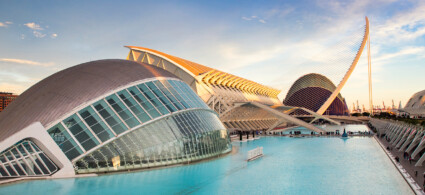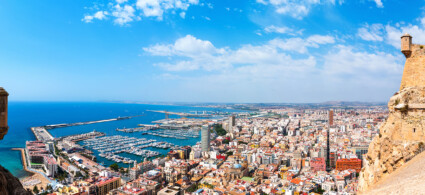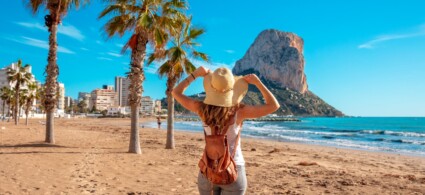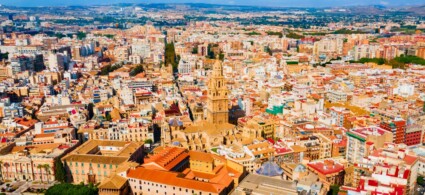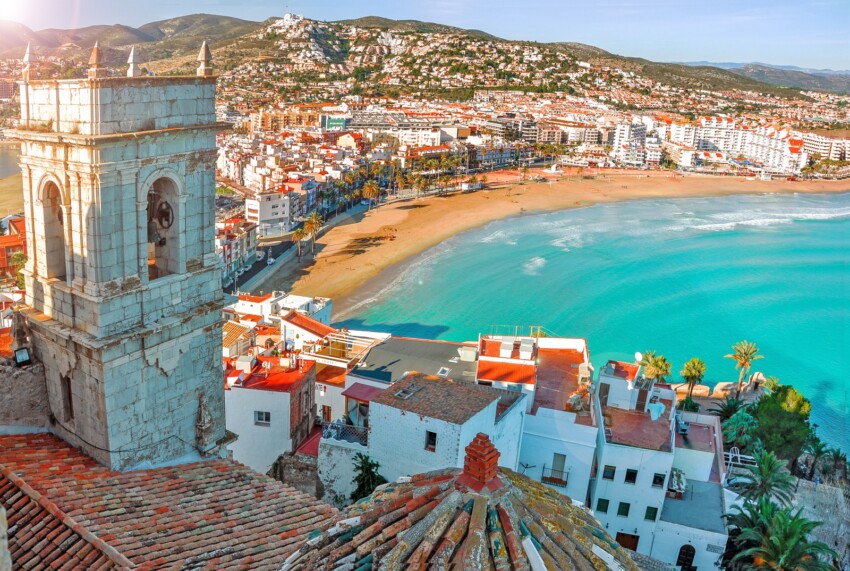

The two regions of eastern Spain, Comunidad Valenciana and Murcia, have everything that tourists expect from a holiday in Spain: paella, year-round sunshine, kilometres and kilometres of coastline, wild nightlife and popular traditional festivities, among which the Holy Week celebrations in Murcia and Las Fallas in Valencia are not to be missed.
To all this must be added natural landscapes of extraordinary beauty and numerous cultural attractions such as the futuristic architectural works of Santiago Calatrava and splendid churches that mix Gothic, Renaissance and Moorish elements. Some places, such as the charming island of Tabarca, are still little known to tourists: come and discover them!
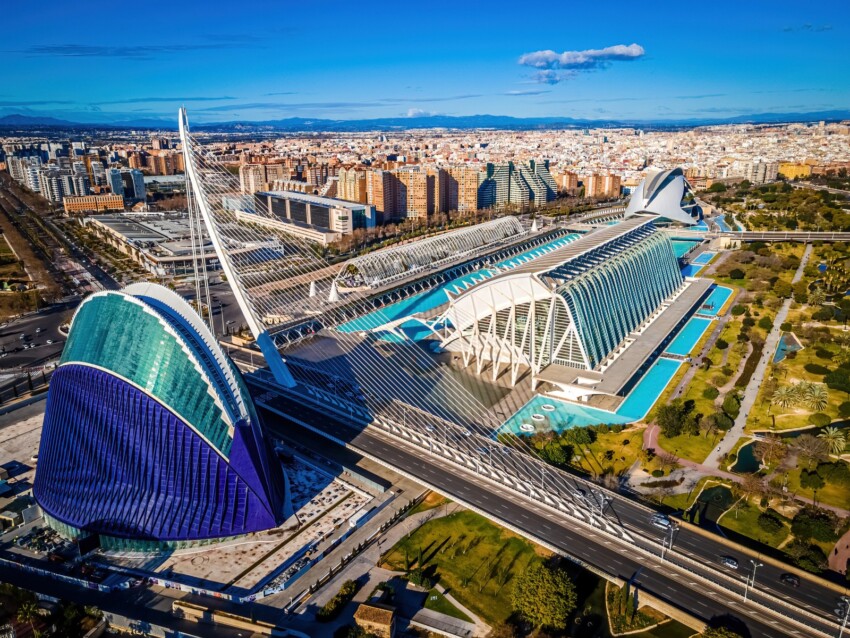
The Valencian Community offers a fascinating mix of modernity and tradition. In Valencia, the futuristic City of Arts and Sciences is a must-see attraction, with its futuristic design by Calatrava. Valencia’s historic centre holds treasures such as the Gothic cathedral, the Lonja de la Seda (UNESCO heritage site) and the lively Mercado Central. Along the coast, Alicante captivates with its imposing Santa Barbara Castle and the characteristic Explanada promenade, while Benidorm attracts tourists with its skyscrapers and lively beaches.
In the Valencian hinterland, towns such as Morella enchant with their medieval architecture, while the Albufera Natural Park offers a unique ecosystem where the renowned rice for paella is cultivated. Peñíscola, with its Templar castle by the sea, and Elche, with its UNESCO World Heritage palm grove, complete the region’s rich cultural mosaic.
The lesser-known but equally fascinating region of Murcia has its heart in the capital of the same name, where the majestic Baroque cathedral with its 92-metre-high bell tower stands out. Cartagena‘s perfectly preserved Roman Theatre bears witness to the port city’s rich past, while the Mar Menor offers a unique setting with its salt lagoon, the largest in Europe.
The Costa Cálida Murciana hides small unspoilt bays and seaside resorts such as La Manga del Mar Menor, a thin strip of land between two seas. Inland, the Santuario de la Vera Cruz in Caravaca attracts pilgrims from all over the world, while the Sierra Espuña Regional Park offers trekking and outdoor activities.
Both regions are distinguished by their gastronomy: Valencian paella and Murcian caldero are just some of the typical dishes to be savoured. The favourable Mediterranean climate allows these destinations to be enjoyed all year round, with more than 300 days of sunshine and mild temperatures that make every visit a pleasure.
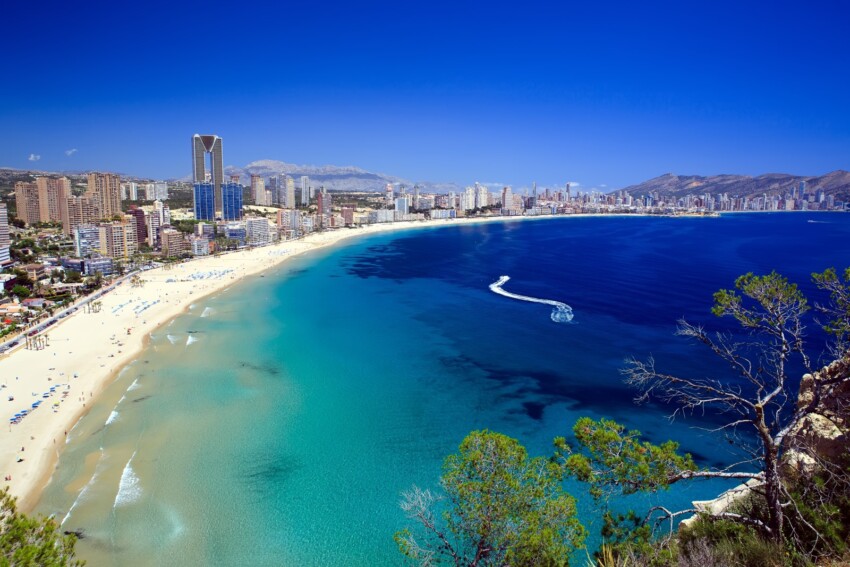
The Valencian Community, especially in the Alicante area, boasts some of the most famous beach resorts in Spain.
The Costa Blanca is in fact a succession of golden sandy beaches washed by surprisingly clean sea. Many of these beaches are taken by storm in summer by tourists from all over Europe, mostly young people looking for fun and nightlife, but also families and elderly people attracted by the large number of hotels, holiday homes and tourist services.
Popular resorts include Benidorm, known for its legendary movida; Benicassim, where an important open-air music festival takes place in summer; Elche, the city with the most palm trees in Europe; Denia, a picturesque fishing village where you can taste the delicious red shrimp; and Torrevieja, a town nestled between the sea and two salt lakes.
The Costa Calida, a coastline dotted with cliffs and kilometres of white sandy beaches in the Murcia region, is recommended for those who prefer less crowded locations and wilder beaches. The most beautiful areas are La Manga del Mar Menor, litoral Cartagena y la Union, litoral de Lorca, Mazarrón and Águilas.
The main gateway to the Valencian Community isValencia International Airport, one of Spain’s main airports, perfectly connected by flights from several airlines. Alternatively, Alicante airport is also worth considering. Murcia, on the other hand, has a small airport, but at present there are no direct connections with our country.
If, on the other hand, you are already in Spain and want to reach the Valencian Community, you can use Spain’s high-speed AVE trains, which connect Valencia with the country’s main cities, Barcelona and Madrid in primis. From there, you can continue your journey to your final destination using the extensive intercity bus network or regional trains.
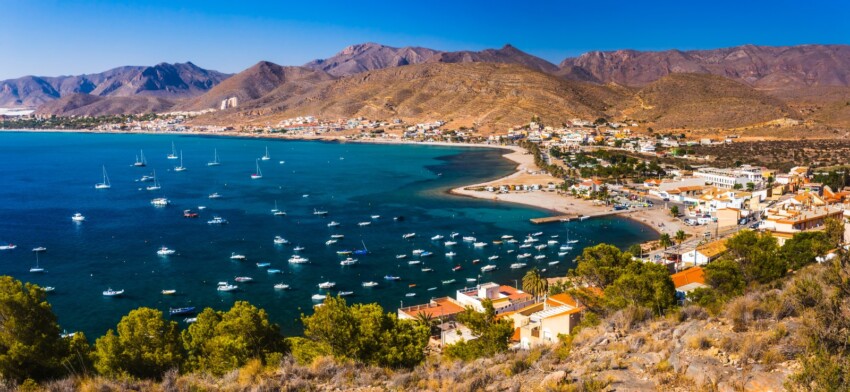
The Comunidad Valenciana and the Comunidad de Murcia are two regions in eastern Spain, both bordered by the Mediterranean Sea to the east and bordering the central region of Castile-La Mancha to the west. To the north, the Valencian Community borders Catalonia and Aragon, while to the south Murcia borders Andalusia.
